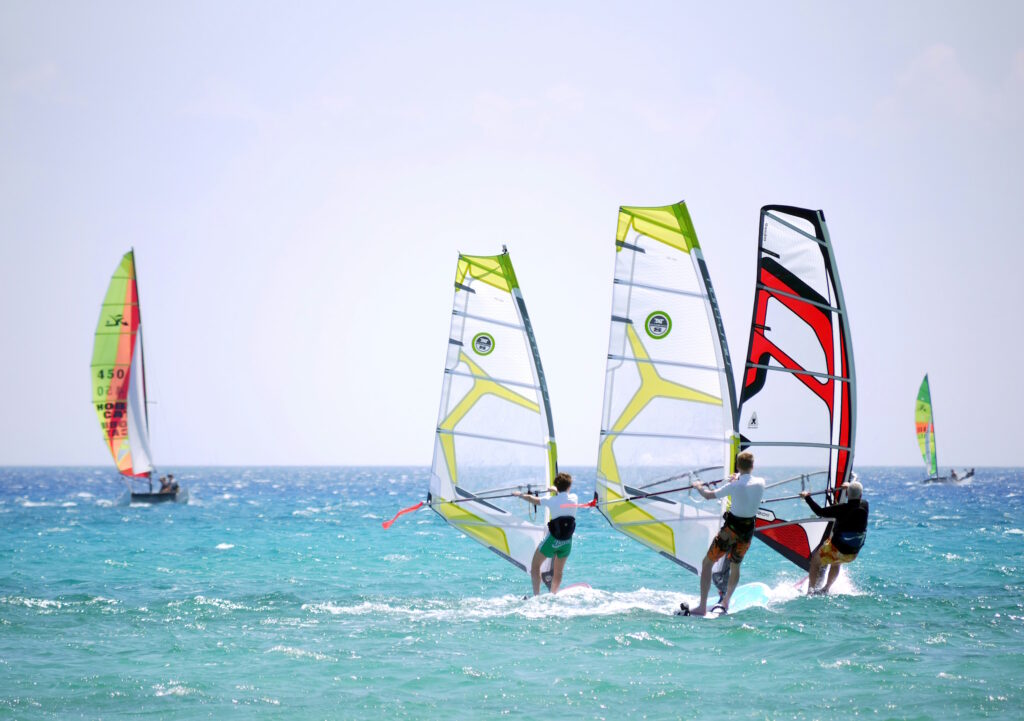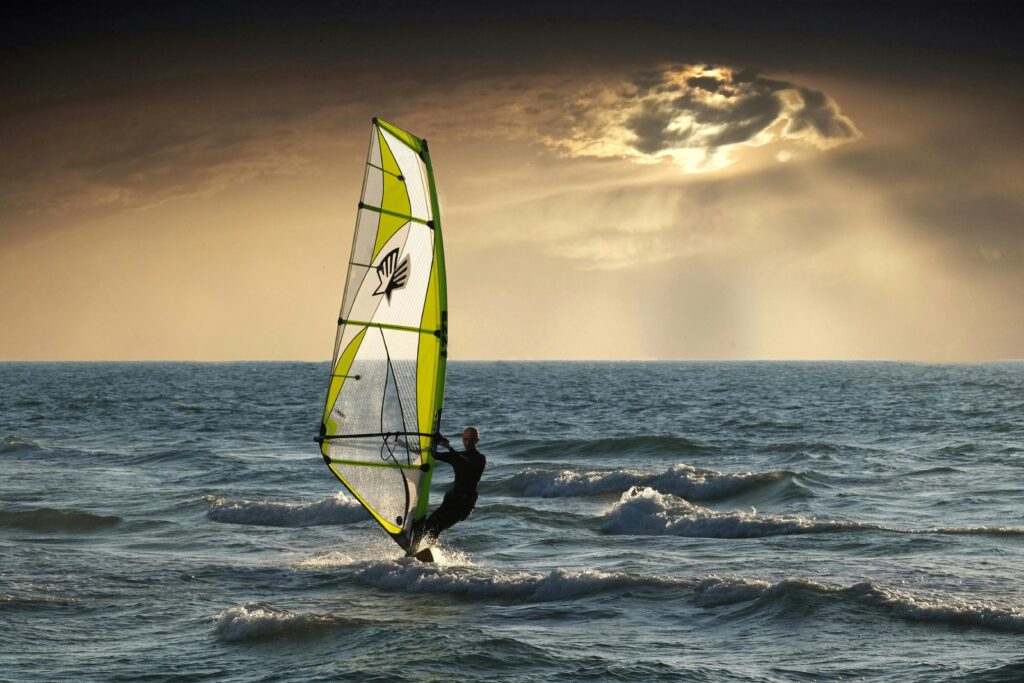As a diving enthusiast, I’ve explored numerous underwater paradises, but few can rival the vibrant allure of Richelieu Rock in Thailand. Nestled in the Andaman Sea, this isolated pinnacle is often hailed as one of the top dive sites in the world. Its magnetic charm isn’t just in its isolation but in the rich, teeming life that flourishes beneath the waves, drawing divers from across the globe.
Diving at Richelieu Rock, you’re plunged into a world of vivid color and diverse marine life. From the smallest animals to majestic whale sharks, the biodiversity is staggering. Each dive here offers a unique spectacle, with the rock’s nooks and crannies hiding countless surprises. If you’re an advanced diver, the underwater marvels of Richelieu Rock promise an unforgettable adventure. Let me guide you through why this site has captured the hearts of divers worldwide and what you can expect from a visit to this aquatic wonder.
Key Takeaways
- Rich Marine Biodiversity: Richelieu Rock is renowned for its diverse marine life, including rare species like harlequin shrimp and ghost pipefish, making it a prime spot for underwater photography and biodiversity studies.
- Optimal Diving Conditions: The best time to dive at Richelieu Rock is from October to May, when visibility can exceed 30 meters due to calm sea conditions, offering clearer views of manta rays and whale sharks.
- Unique Geological Formation: The horseshoe-shaped granite pinnacle of Richelieu Rock, formed by volcanic activity, creates a natural amphitheater that enhances marine life density and diversity.
- Accessibility and Travel: Located about 200 kilometers northwest of Phuket, Richelieu Rock is typically accessed via liveaboard dive boats that provide direct and continuous access to the site, optimizing underwater time.
- Diving Safety and Gear Recommendations: Safety is paramount due to varying currents and visibility; recommended gear includes a 3mm wetsuit, high-quality mask, snorkel, and fins suited for strong currents, along with essential safety equipment like a surface marker buoy.
- Seasonal Marine Encounters: The months from February to May heighten the opportunity to witness whale sharks, adding to the allure and unique experience offered by Richelieu Rock’s vibrant underwater world.
Overview of Richelieu Rock Diving Site Thailand
Richelieu Rock, located in the Andaman Sea, stands as one of the most distinguished dive sites in the world. As a diving enthusiast, I’ve been privileged to explore this stunning location multiple times. The site is about 200 kilometers northwest of Phuket and forms part of the Surin Islands National Marine Park, an area dedicated to the conservation of marine life.
I’ve observed the site’s horseshoe-shaped reef brimming with life. Here, the waters are remarkably clear, offering visibility that sometimes exceeds 30 meters, depending on weather conditions. This clarity allows for an unobstructed view of the vibrant marine life that includes vast schools of fish and spectacular coral formations.
Diving at Richelieu Rock is best suited between October and May, when the sea conditions are most favorable. During this period, divers might encounter manta rays and the elusive whale shark, the latter being a major draw for the site. Numerous dive operators in the region offer visits to Richelieu Rock, with options ranging from day trips to multiple-day liveaboard excursions, catering to both novice and experienced divers.
Each dive at Richelieu Rock provides a unique experience. From the breathtaking array of soft corals to large pelagic fish that roam the deep blue, the biodiversity here is unparalleled. Photographers, in particular, will find the vividly colored sea life and intricate coral structures a joy to capture. My past dives have been nothing short of extraordinary, with each visit uncovering something new in this aquatic haven.
The Unique Geography of Richelieu Rock
Richelieu Rock’s unique geography isn’t only a marvel for the eyes but also a magnet for marine biodiversity. This section dives into its formation and how its location enhances its accessibility.
Formation and Structure
Richelieu Rock is an intriguing granite pinnacle that rises from the depths of the Andaman Sea. Its formation is the result of volcanic activity, leaving behind a structure that’s both rugged and captivating. Its horseshoe shape creates a natural amphitheater which shelters a diverse range of coral reefs and marine life. The rock itself does not breach the sea surface at high tide, creating a submerged ecosystem that thrives under the nutrient-rich currents. These currents, combined with the rock’s complex topography of caves, crevices, and tunnels, facilitate the thriving marine habitat that attracts underwater photographers and ecology enthusiasts.
Location and Accessibility
Situated approximately 200 kilometers northwest of Phuket, Richelieu Rock is accessible yet distinctly set apart from mainland activities, enhancing its pristine condition. To reach this remote diving haven, divers embark from either Phuket or Khao Lak on boats specifically arranged for dive trips. The most common way to explore Richelieu Rock is via liveaboard dive boats, which offer multi-day excursions to dive enthusiasts. These boats provide direct and exclusive access to the dive site, ensuring that divers spend more time underwater and less time traveling. Accessibility is optimized between October and May, when the sea conditions are calmest, ensuring safer and clearer dives. Richelieu Rock’s isolation contributes to its unspoiled waters and abundant sea life, making each dive a worthwhile adventure.
Marine Life at Richelieu Rock
Richelieu Rock brims with an astonishing array of marine life, making it a top destination for divers. This isolated pinnacle is a hotspot for biodiversity, showcasing a range of species from minute sea creatures to majestic pelagics.
Rare Species and Habitats
Exploring Richelieu Rock, I’ve encountered a multitude of rare species that thrive in unique habitats created by the rock’s intricate underwater geography. Among these, the harlequin shrimp and ghost pipefish stand out, found lurking around soft corals and under rock overhangs. The area’s nooks and crannies serve as nurseries for juvenile fish such as the colorful juvenile emperor angelfish. The nutrient-rich currents washing over the rock support a lush growth of sea fans and sponges, which in turn attract diverse macro-life. This ecosystem’s complexity makes it a crucial refuge for many species vulnerable elsewhere.
Best Times to View Different Species
Richelieu Rock offers year-round diving, but the best times to view different species vary with the seasons. Typically, the visibility peaks between October and April, coinciding with the northeast monsoon when the seas are calmest. During these months, divers often spot schools of barracuda and the occasional manta ray gliding through the waters. From February to May, the chances of encountering the majestic whale sharks increase significantly due to the plankton present on the site, making it a particularly exciting time for divers at Richelieu Rock. Each visit to this dive site reveals something new, driven by the complex interplay of seasonal currents and marine life patterns.
Diving Conditions at Richelieu Rock
Visibility and Water Currents
The visibility at Richelieu Rock typically ranges between 10 and 35 meters, depending on the season. This clarity is one of the reasons why photographers and enthusiasts flock to this site. The exceptional visibility is mostly prevalent from October to May, which also coincides with the prime diving season. Water currents around Richelieu Rock can vary significantly, spanning from gentle flows suitable for beginners to stronger currents that challenge even the most skilled divers. These currents are crucial as they bring in nutrients that support the rich biodiversity of the reef.
Temperature and Diving Seasons
Water temperatures at Richelieu Rock stay quite constant, averaging around 27 to 30 degrees Celsius (81 to 86 degrees Fahrenheit) year-round. This warm tropical water makes diving at Richelieu Rock a comfortable experience, with minimal need for heavy wetsuits. The best diving season stretches from October to May. During this period, the sea remains calm and the underwater world is at its most vibrant. April to May is particularly thrilling, as divers have a higher probability of spotting majestic whale sharks.
Practical Information for Divers
When planning a dive trip to Richelieu Rock, understanding the practical aspects such as safety considerations and recommended diving gear enhances your experience.
Safety Considerations
Diving at Richelieu Rock, I always prioritize safety due to the site’s varying currents and depth. It’s imperative to dive with a reliable, experienced dive operator aware of the area’s conditions. These operators ensure divers are briefed thoroughly on safety protocols, including buddy system adherence and emergency procedures.
Visibility often fluctuates, especially during the monsoon season from May to October, thus divers must be comfortable navigating in varying clarity. Furthermore, given Richelieu Rock’s open sea location, sudden changes in weather conditions can occur, and it is vital to check weather forecasts frequently, which dive operators generally monitor closely.
Carrying safety equipment, like a surface marker buoy (SMB) and a dive computer, is non-negotiable. These devices aid divers in maintaining proper depth levels and mark their positions to surface boats, crucial for safe group ascents and emergencies.
Conclusion
Diving at Richelieu Rock has proven to be an unforgettable experience that deeply enriches any diver’s passion for the underwater world. The site’s stunning clarity and abundant marine life make each dive uniquely captivating. Whether you’re a novice eager to explore new depths or an experienced diver in search of rare marine creatures Richelieu Rock offers a spectacular dive experience that is both challenging and rewarding. I’m already planning my next trip back to this magnificent diving destination and I encourage every diving enthusiast to consider this incredible spot for their next underwater adventure.
Check out other fantastic sites in Thailand:
– Ultimate guide to dive in Thailand
– Scuba Diving in Hin Pusar
– Utimate Guide to Scuba Diving in Hin Muang & Hin Daeng
– Ultimate Guide to Scuba Diving in Koh Phi Phi
– Ultimate Guide to Scuba Diving in the Similan Islands
– Ultime Guide to Scuba Diving in Koh Tao
– Dive the King Cruiser Wreck


